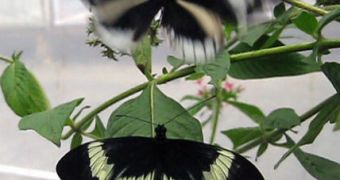The US National Science Foundation (NSF) is currently funding a series of research that is focused on monitoring the evolution of a species of butterflies that researchers believe is about to divide into two.
These insects may be on the verge of splitting into two distinct species, which means that members of one will not be able to interbreed with individuals in the other. This could be a historic moment for science to keep tabs on the population as this process unfurls.
It is widely accepted that evolution takes millions of years to happen, so the fact that we are here to notice as the process reaches its tipping point is a privilege. This is why the NSF is so interested in keeping an eye on these butterflies.
The study is being conducted at the University of Texas in Austin (UTA), and the team behind it is led by professor of integrative biology Larry Gilbert. He is also the director of the Brackenridge Field Lab.
He is focusing his research on Heliconius butterflies, which can be found in the southern United States, and Central and South America. The tropical insects are beautifully colored and are very large.
It is believed that they evolved their bright array of colors in order to warn predators that they taste bad.
“The color pattern is a complex of two forces, the anti-predator force, which is probably the predominant thing, but the details may involve the selection of the right mate,” Gilbert explains.
These butterflies lead very complex lives, and are so good at finding food that they can expand their life span to as much as 6 months. This means that they can produce up to 2,000 eggs in a lifetime, rather than around 200, as other species do.
At this point, experts are tracking a population of Heliconius in Ecuador, which they believe is about to split. The defining factor behind this process – called speciation – is the color patterns the insects have.
“So what we are finding is the butterflies shift their color pattern to avoid predators, but it has this secondary consequence of causing them to no longer recognize each other as potential mates, and we think, actually causing speciation,” explains Marcus Kronforst.
The expert is now based at the Harvard University, but he worked extensively with Gilbert in the past.
“There is an incipient process going on [in Ecuador], where the yellows are preferring yellows, but the whites are not caring much about which color it is,” Gilbert explains.
“So, it's an initial step in the direction of correlating color with mate preference, which under some circumstances could lead to speciation,” he concludes.

 14 DAY TRIAL //
14 DAY TRIAL //